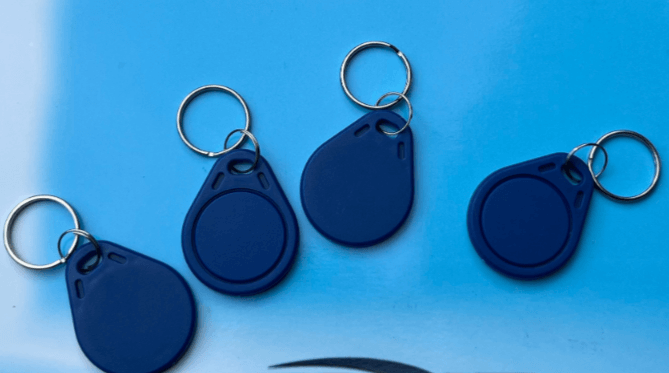Customer experience metrics are a vital way to understand what drives customers to your business and what needs to be improved to keep them. Many customer experience metrics exist, from traditional survey responses to customer journey mapping and social media sentiment. Well, in this digital world, social media analytics can help you a lot to explore and track customer behaviors.
Measuring experiences in real time helps prioritize opportunities for improvement. It ensures that your resources are focused on the areas that matter most to customers and help you achieve your business goals.
Customer Satisfaction
Customer satisfaction measurements reveal how customers feel about your goods, services, and business. What are customer experience metrics? Numerous techniques, like surveys, feedback forms, focus groups, and consumer advisory boards, can be used to gather these KPIs. They are essential because they allow spotting places where the client experience could require some work.
For example, a customer could be delighted with a specific product but more satisfied with your business’s overall quality. It would be reflected in a low CSAT score. Another critical metric is Customer Effort Score (CES). This metric measures the amount of effort that is required to complete an interaction. For example, if a customer is trying to fill out a form or find information on your website, they may be frustrated by the time and effort it takes.
Key customer satisfaction metrics include First Contact Resolution (FCR) and Customer Lifetime Value (CLV). FCR is the percentage of customers whose issue or query was resolved on the first attempt by your team. A high FCR demonstrates the effectiveness of your support processes.
A negative customer experience can lead to brand deterioration and, ultimately, a loss of business. Therefore, tracking your key CS metrics and working towards continuous improvements in your business processes is crucial.
Customer Loyalty
Customer loyalty is the ultimate goal of a business, as it leads to long-term success and growth. Businesses can cultivate loyal customers through various ways, such as competitive pricing, promotions, or loyalty rewards. They can also offer convenience, such as online ordering and delivery or in-store pickup options. They can even offer value unrelated to money, such as donating sales proceeds to charities that align with their values or offering discounts to military personnel and veterans.
Several metrics can help businesses understand how to create and maintain high customer loyalty, such as Customer Effort Score (CES) and Net Promoter Score (NPS). CES measures the effort required for a specific interaction on a relative scale, while NPS asks a question that evaluates loyalty and advocacy. Both can be collected through a survey to identify areas where improvements can be made for a better experience.
CX metrics are a vital tool for understanding the customer journey and improving the quality of products and services. Using these metrics will also empower businesses to differentiate themselves from their competitors by delivering an attractive customer experience that meets the needs and expectations of consumers. Companies that prioritize customer experience will enjoy the benefits of repeat business, referrals, and recommendations from existing customers.
Customer Retention
A high customer retention rate is one of the most critical metrics for a business. It shows how loyal customers are to your product or service and can help you increase revenue and profits. Customer retention is also a good indicator of potential upsell or cross-sell opportunities. Companies that focus on their customers can increase revenue through referrals and repeat purchases, which can help them stay ahead of their competition.
Some of the most important metrics to track are first contact resolution (FCR), customer effort score (CES), and net promoter score (NPS). These metrics give you a complete picture of how well your company is performing. NPS, in particular, measures overall loyalty and satisfaction with your brand over time, while CSAT and CES measure individual experiences.
Another valuable metric is the customer health score, which helps you identify and prioritize issues for your team. This metric is measured by asking respondents to rate their experience with a specific activity, such as filling out an online form or searching for a product. It considers their satisfaction level, how easy it was to do the task, and whether or not they would recommend the service to a friend.
This metric benefits businesses operating on a recurring revenue model, such as software-as-a-service providers and other subscription-based brands. It’s much more expensive to acquire new customers than retain existing ones, so keeping a high customer retention rate is essential for companies that want to remain profitable.
Customer Engagement
Customer experience metrics are standards that you can use to measure and assess different factors that add up to a great customer experience. They help you identify areas where your customer experience could improve and develop strategies to improve.
Metrics like first contact resolution (FCR), average reply time, and other metrics that focus on productivity can give you valuable insights into your team’s efficiency. However, they need to give you the complete picture of how your customers feel about your product or service.
You need a single view of your customer to gain valuable insight. It is the only way to understand what they want and how well your services meet their expectations. With a single view of your customers, you can unify marketing and customer support efforts to deliver the best possible experience.
Having an integrated view of your customers also makes it easy to personalize interactions. When you know what your customers want, you can create a tailored experience that meets their needs and drives retention and growth. For example, if you know that your customers prefer fast and helpful replies, you can provide them with the kind of personalized support they expect. It will help you build a strong brand image and show your customers that your company cares about their satisfaction.







